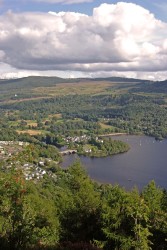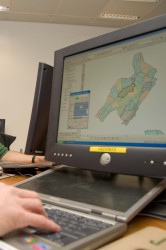Summary
Summary


The purpose of this project is to develop methods and models which can provide spatial representations of the cultural ecosystem service benefits derived from different kinds of woods and forests. The research uses empirical qualitative and quantitative spatially referenced data collected since 2004 that records the preferences and values attributed to particular woodlands by members of the public.
Research objectives
- Review existing spatial analysis approaches, tools and methods that integrate social and cultural ecosystem service values provided by woodlands
- Apply learning from the review to develop and test methods for mapping and spatial analysis of a range of social and cultural ecosystem services provided by different kinds of woodlands
- Publish the method or key learning points from testing methods
Results so far
A review of methods was completed in 2012. An overview and critical assessment of the current approaches to mapping cultural ecosystem services is presented. This identifies the scales at which these tools operate, the systems of value measurement, weighting and scoring applied, and the utility of the final mapped outputs. Conclusions suggest different approaches are needed for strategic decision-making and operational decision-making, and where such tools are used in active decision-making, the methods employed need to be negotiated, agreed and legitimised by a range of relevant stakeholder.
Spatial analysis and prioritisation of cultural ecosystem services: A review of methods (PDF-4184 KB)
Status
This research started in 2011 and ended in 2015.
Development of a GIS-based modelling method is ongoing.
Contact
Funders and partners
This work is funded by the Forestry Commission
The review of methods was completed in partnership with the Wales Environment Research Hub (WERH).
Forestry Commission policy
The Scotland’s Forestry Strategy includes a commitment to increasing and enhancing the opportunities for enjoyment and health from woods and forests. The Strategy for Scotland’s National Forest Estate includes provision of cultural ecosystem services around recreational experiences, cultural, intellectual and spiritual inspiration and scientific advancement. Both of these approaches contribute to the Scottish Government’s Land Use Strategy that looks to demonstrate how an ecosystems approach might be taken into account in relevant decisions.
In England the Government’s Forestry Policy Statement has a strong commitment to understanding and mapping the provision of ecosystem services and supporting commitments in the Natural Environment White Paper, which sets out the need to strengthen the connection between people and nature and derive the greatest benefits from ecosystem services.
